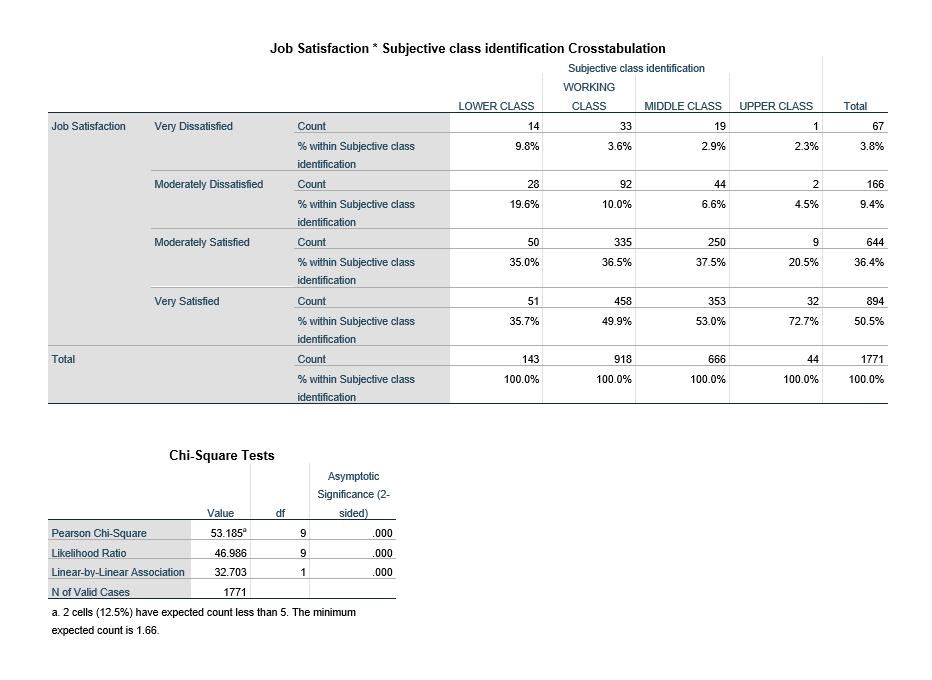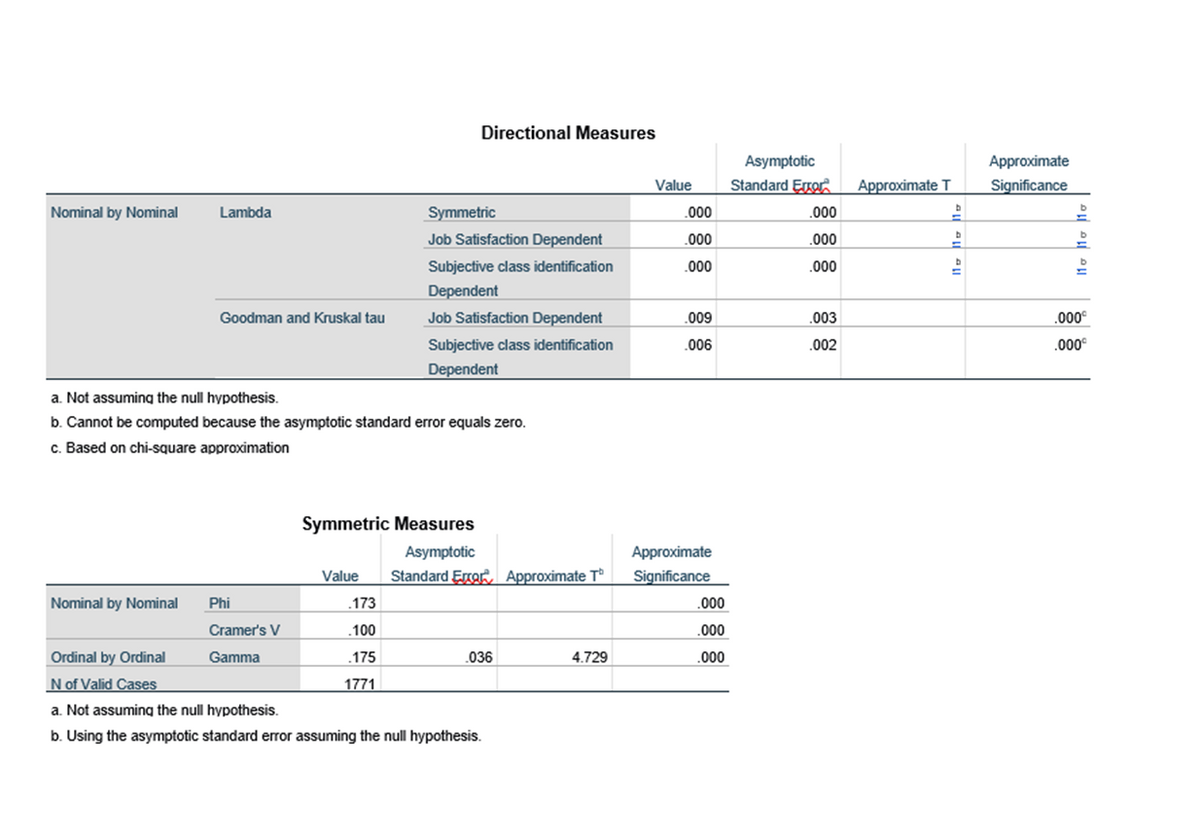Produce a CROSSTAB for the variables CLASS and RECYCLE. Before conducting your analysis, first reverse code SATJOB so that 1 = Very Dissatisfied; 2=Moderately Dissatisfied; 3=Moderately Satisfied; and 4=Very satisfied. Set all other values (8, 9) to system missing. Then examine the relationship between social class and job satisfaction by testing both statistical significance and strength of association. Use chi-square for significance and choose
Produce a CROSSTAB for the variables CLASS and RECYCLE. Before conducting your analysis, first reverse code SATJOB so that 1 = Very Dissatisfied; 2=Moderately Dissatisfied; 3=Moderately Satisfied; and 4=Very satisfied. Set all other values (8, 9) to system missing. Then examine the relationship between social class and job satisfaction by testing both statistical significance and strength of association. Use chi-square for significance and choose the appropriate measures for strength of association (Phi, Cramer’s V, Lambda, or Gamma). Set alpha to .05.
State the null and research hypotheses:
H0:
H1:
What is the obtained chi-square value?
What is the significance level (p-value) for the obtained chi-square?
Should we reject or fail to reject the null hypothesis?
Is there a statistically significant relationship between these variables?
Which measure of association would be most appropriate for these variables?
What is the value of the measure of association?
Interpret your findings by explaining in full sentences whether there is a statistically significant relationship or not and the strength of the relationship. Also explain any patterns you see in the percentages:


Step by step
Solved in 3 steps









